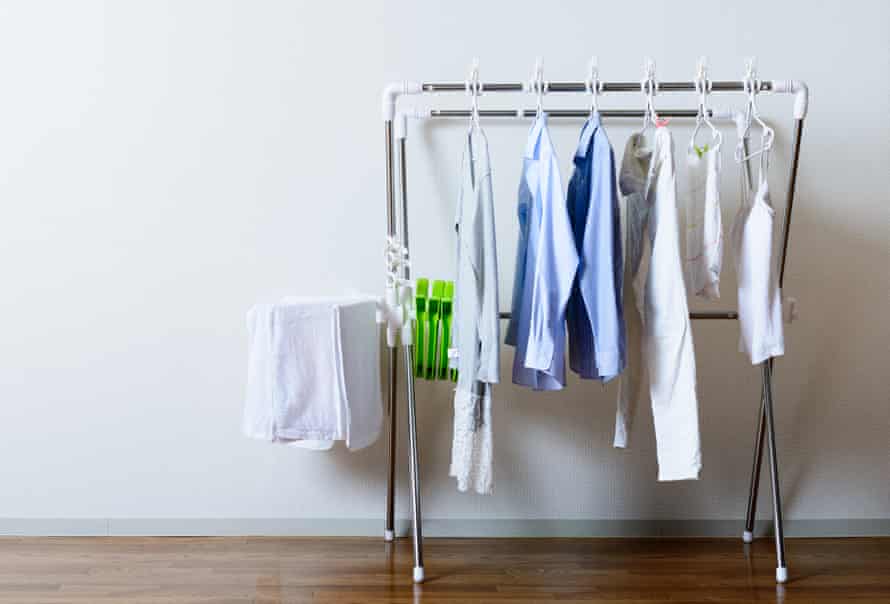Shared from Lifestyle | The Guardian
Last week I visited a friend in Sydney and over four days we drove up the coast to Yamba, stopping to eat, sleep and swim along the way. The La Niña weather was warm, overcast and very humid, so nothing dried easily. Not our towels. Not our swimsuits. Not our t-shirts. Anything left on the floor of the car in between towns developed a musty smell.
When we got back to his apartment in North Bondi it was the first time I noticed (and was grateful for) his dehumidifier. Unfortunately, humidity poses a threat to our bags, clothes and shoes – here’s how to mitigate it.
The mildew smell
If (like me) you’ve forgotten all your primary school science, humidity is the concentration of water vapour in the air. In warm weather when humidity is high the air holds more water vapour, so there’s nowhere for moisture to evaporate to. That’s why we feel sticky and everything takes longer to dry.
This can be a problem, since clothes, shoes and bags that are damp for too long can develop mildew, a type of mould that thrives when things are warm and wet.
According to Alice Payne, an associate professor of fashion at Queensland University of Technology, the first step to avoiding this is to make sure clothes, shoes and bags are never put away damp or soiled, because mildew feeds on dirt and food stains. Clearing any crumbs from your handbag is also key.
As mildew grows, it can also eat plant-based fibres like cotton, linen and viscose, causing permanent discoloration and damage. This creates quite a dilemma: natural fibres are more comfortable to wear in humidity since they are breathable and absorbent, but they are more susceptible to mildew than synthetics.
Synthetics are less susceptible to mildew (although they can fall prey to it when left damp or dirty for long periods) but are not comfortable to wear in humid environments.
Humidity-friendly fabrics
It might be counterintuitive in warm wet weather, but Payne suggests opting for garments made of wool because of the fibre’s antibacterial and moisture wicking properties. Less common fabrics like ramie and hemp are also naturally resistant to rot and mildew.
Payne also suggests considering the weave of the fabric because “some weaves perform better in humid conditions”. Seersucker, the crinkly cotton fabric with a complex social history, has a practical reason for being associated with warm, wet climates. “The crinkle allows it to float over the skin more than flat weaves do,” Payne says.
Drying in high humidity
Payne says drying clothes flat and un-bunched on the line is the most effective way to ensure everything dries completely. If it is too humid or rainy to dry clothes outside, hang them on a rack inside with space between each garment. Use a fan to help circulate the air, or a dehumidifier to remove excess moisture.

After you’ve done a load of washing, ensure as much moisture is removed from the clothes as possible. Either wring out each garment or put them on a high-spin cycle in your washing machine – but be mindful of delicate garments and their care instructions.
For shoes and bags, run a towel inside anything leather to remove surface moisture and place it somewhere dry away from heaters and sunlight. Pull out the tongue and insole of canvas shoes and leave them to dry in the sun. Stuffing shoes and bags with tissue paper can also help absorb excess moisture.
If the rot has set in
If mildew has already formed, Payne recommends washing suffering garments on “a hot wash with some bleach”. If your garment is too delicate for this, use a laundry detergent with antimicrobial ingredients like citrus seed extracts or tea tree oil. Dry cleaning should also work.
Alternatively, Payne says you can spot treat mildew stains by rubbing lemon juice into them, or sponging them with hydrogen peroxide and drying the garment in the sun.
This can also be applied to shoes or bags made of fabric. For leather, take your shoes or bag outside and use a microfibre cloth to remove the mildew – but be sure to protect your airways while you do so. Then, Payne says to apply rubbing alcohol to the affected area to clean it further. Do your best to remove all the spores as anything left behind can continue to grow. There are also specialty leather products like this one that can help remove mould and mildew.
Storage tips
When storing things in humid environments be sure to check closets and drawers for mould and treat and remove all spores before placing anything inside. Since air flow between garments can help prevent mildew, don’t over overcrowd your wardrobe, and every so often, on dry sunny days, hang your clothes outside for some air.

Never store garments in plastic bags, including dry cleaning bags. For clothes that require garment bags, always opt for cloth bags and place some tissue paper in pockets. Desiccant pouches – the kind you find everything from shoe boxes to tech products to vitamin jars – are also great for slipping into pockets, so don’t throw them away.
The same goes for storing shoes, sneakers and handbags, stuff them with tissue paper and a desiccant pouch, place them inside cloth bags and store them in the driest conditions as possible.
Clothes, bags and shoes can also be sprayed with moth or water repellents before storage to help prevent mildew too.
Images and Article from Lifestyle | The Guardian
#Break #mould #prevent #mildew #clothes #accessories #high #humidity #Fashion

